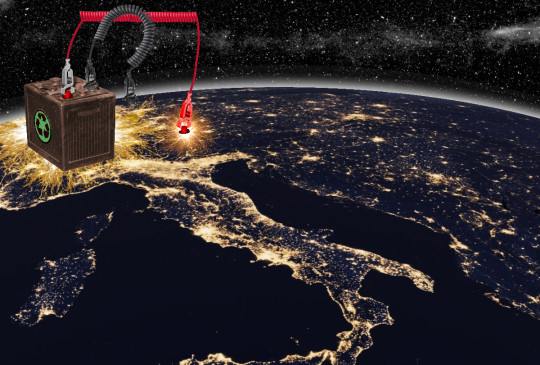#Peak energy of
Text
The other people logging in and seeing the carnage of yesterday and being informed that the culprits are Capybaras while they just have to sit there and accept it like 😐😐😐. I love Silly SMP
#I love Baghera's little message in the hat#Chat#Peak energy of#Are these Capybaras in the room with us rn aksksksk#qsmp#Qsmp lb
89 notes
·
View notes
Text




Dreams shattered and devastated, but for good reason
#they had peak sibling energy this ep#dungeon meshi spoilers#as i watch dungeon meshi#dungeon meshi#marcille#laios touden
13K notes
·
View notes
Text

FNAF movie Mike is suspicious of Lefty…
#myart#chloesimagination#comic#mike schmidt#fnaf puppet#lefty#michael afton#fnaf#fnaf 2#fnaf pizzeria simulator#fnaf movie#fnaf fanart#five nights at freddy's#LEFTY MENTIONED 🔥🔥#after drawing the puppet I knew I’d eventually have to draw lefty#I just gotta do not separate lefty and poopet pff#I’ve actually always loved lefty they are so spooky#I like how you’re given little to no info about em but they give off this like#violent energy ITS SO well done#I can talk in circles around pizza sim being peak#mike is obviously unnerved immediately by lefty#Michael is just being a good business man#simply ignore the haunting 👍🏾
5K notes
·
View notes
Text
Look At This Cute Cat- SIKE BITCH, IT'S A RACCOON!
Cat Danny this, fish Danny that. Give me my fucked up little trash panda thank you very much.
________
It was just there, lying on the floor, staring at him.
Damian's newest pet installment came in the form of a raccoon, except the damn thing was unlike any raccoon Jason has ever seen. It was mostly white with the most expressive eyes no raccoon should have.
Jason didn't like it. The little fuck always looked like it was judging him whenever he came by the manor and he could've swore that it gave him the middle finger at one point. If it didn't count as animal cruelty he would've chucked the thing out the nearest window right now and relish in its surprised scream. He wouldn't really do that of course but the thought was tempting.
"Todd stop pestering him," Damian walked in, picking up the lazy ringed bastard from off the floor as if that thing wasn't heavy from all the food it was eating.
"I didn't even do nothing."
As Damian turned his back and began walking away with the raccoon it looked him straight in the eyes and gave him two of its best middle fingers.
Yup! Jason hated that thing.
#danny fenton#danny phantom#dp crossover#dc x dp#dp x dc crossover#dpxdc#dp x dc au#dc x dp prompt#raccoon danny#danny has maxed out his gremlin energy and is in his peak form#jason is not amused#reject puny humanity become trash panda#one of these two stinks and it's not danny#as soon as damian leaves danny and jason are fighting#danny wins all the time#jason wants to through him back in the trash#damian wayne#damian found a fucked up raccoon and decided to keep it#the fucked up raccoon was danny#they're besties your honor
2K notes
·
View notes
Text













Crimson Peak, 2015, dir. Guillermo del Toro
#'i HOPE she can see me and thomas fuck nasty'#real 'mother dear. oh we know youre... down there listenin' energy#horror aesthetic#horror movies#horror quotes#crimson peak
3K notes
·
View notes
Text
Percy casually asking out Annabeth on a movie date without even realizing it is peak Pecy Jackson
Meanwhile Annabeth is probably constantly replaying the moment in her head, trying to decide if he asked her out or if it's just a casual hang out
2K notes
·
View notes
Text
Huge shout-out to John Cena for dropping my new transition goal that one time last year. Look at this and earnestly say this isn't peak male performance.

#trans#transgender#lgbt#lgbtq#ftm#nonbinary#trans meme#described images#image description in alt#to me. this is peak masculinity. to me#i'm not even a fan of skirts but i want this energy#i have witnessed like... five or six trans people (at least) rocking this EXACT outfit like. this aesthetic is inescapable#i don't like the idea of body goals but john cena is my closest body aspiration. LOOK AT HIS BEEFED-UP THIGHS!!!#man does NOT skip leg day (aka the best day. arm days SUCK and they are hell on earth. all my homies hate arm day)
2K notes
·
View notes
Text

making Hades a sassy king who just wants to be left out of his family drama was genius
#like i got your tea hades#he just wants to manage his kingdom in PEACE#PEAK MIDDLE CHILD ENERGY#MY DEAREST HADES#hades#percy jackson#pjo#percy jackon and the olympians#percy jackson the lightning thief#pjo tv#percy series#pjo tv show
3K notes
·
View notes
Text


im going batshit insane over these twos,,,, god bless
#twin peaks#dale cooper#harry truman#trucoop#found myself another tv show from the 90s to hyperfixate on for the next 3 months#anyways#live laugh love gay cops#the lack of content with these twos is terrifying#gifs#also is it just me or is everyone is this cast f*ckable#me finishing the first 2 seasons confused and getting a weird attraction to kyle maclachlan#they cast kyle maclachlan as a hardboiled fbi detective type with a weird aura and kitten energy and expect me to not be attracted to him
1K notes
·
View notes
Text
Mech pilot yuuta and his mech that’s incredibly possessive over him. He takes to you as a handler almost immediately, excited for the help after his last few handlers were scared off. You’re not allowed inside, your constantly dodging malfunctioning limbs and faulty wires, but you’re not one to back down, and gaining her trust is just as important as gaining his.
Rika only realizes how important you are to Yuuta the day after you spend the night with him, and he’s left alone in the morning with an empty bed and a broken heart. You’re his handler. You’re not supposed to leave him. Not ever.
She lures you into her chest one night, faking some sort of lighting malfunction and allowing you inside for the first time. She keeps you inside all night, enduring all your yelling and banging on her insides to be let out, a nice gift for Yuuta.
#he’ll coax you into the neurolink connection with sweet words#talk about being unable to live without you how much he needs you#not only as his handler but as someone he’s falling in love with#the link will only make the two of you stronger#you’ll let him right?? let him peak inside your brain and hear all your thoughts#he’ll know every time you think of leaving#know your desire for him when your words say otherwise#you won’t be able to hide anymore#especially not when rika has taken to you too#you belong to them now❤️#sorry had to get that out#lowkey a little horrific to be trapped in a mech#but this au is consuming my life#if I had any energy I would write this but#it’s all going toward my Touya fic I fear#ghost thoughts
403 notes
·
View notes
Text
Circular battery self-sufficiency

I'm coming to DEFCON! On FRIDAY (Aug 9), I'm emceeing the EFF POKER TOURNAMENT (noon at the Horseshoe Poker Room), and appearing on the BRICKED AND ABANDONED panel (5PM, LVCC - L1 - HW1–11–01). On SATURDAY (Aug 10), I'm giving a keynote called "DISENSHITTIFY OR DIE! How hackers can seize the means of computation and build a new, good internet that is hardened against our asshole bosses' insatiable horniness for enshittification" (noon, LVCC - L1 - HW1–11–01).

If we are going to survive the climate emergency, we will have to electrify – that is, transition from burning fossil fuels to collecting, storing, transmitting and using renewable energy generated by e.g. the tides, the wind, and (especially) the Sun.
Electrification is a big project, but it's not an insurmountable one. Planning and executing an electric future is like eating the elephant: we do it one step at a time. This is characteristic of big engineering projects, which explains why so many people find it hard to imagine pulling this off.
As a layperson, you are far more likely to be exposed to a work of popular science than you are a work of popular engineering. Pop science is great, but its role is to familiarize you with theory, not practice. Popular engineering is a minuscule and obscure genre, which is a pity, because it's one of my favorites.
Weathering the climate emergency is going to require a lot of politics, to be sure, but it's also going to require a lot of engineering, which is why I'm grateful for the nascent but vital (and growing) field of popular engineering. Not to mention, the practitioners of popular engineering tend to be a lot of fun, like the hosts of the Well That's Your Problem podcast, a superb long-form leftist podcast about engineering disasters (with slides!):
https://www.youtube.com/@welltheresyourproblempodca1465
If you want to get started on popular engineering and the climate, your first stop should be the "Without the Hot Air" series, which tackles sustainable energy, materials, transportation and food as engineering problems. You'll never think about climate the same way again:
https://pluralistic.net/2021/01/06/methane-diet/#3kg-per-day
Then there's Saul Griffith's 2021 book Electrify, which is basically a roadmap for carrying out the electrification of America and the world:
https://pluralistic.net/2021/12/09/practical-visionary/#popular-engineering
Griffith's book is inspiring and visionary, but to really get a sense of how fantastic an electrified world can be, it's gotta be Deb Chachra's How Infrastructure Works:
https://pluralistic.net/2023/10/17/care-work/#charismatic-megaprojects
Chachra is a material scientist who teaches at Olin College, and her book is a hymn to the historical and philosophical underpinnings of infrastructure, but more than anything, it's a popular engineering book about what is possible. For example, if we want to give every person on Earth the energy budget of a Canadian (like an American, but colder), we would only have to capture 0.4% of the solar energy that reaches the Earth's surface.
Now, this is a gigantic task, but it's a tractable one. Resolving it will require a very careful – and massive – marshaling of materials, particularly copper, but also a large number of conflict minerals and rare earths. It's gonna be hard.
But it's not impossible, let alone inconceivable. Indeed, Chachra's biggest contribution in this book is to make a compelling case for reconceiving our relationship to energy and materials. As a species, we have always treated energy as scarce, trying to wring every erg and therm that we can out of our energy sources. Meanwhile, we've treated materials as abundant, digging them up or chopping them down, using them briefly, then tossing them on a midden or burying them in a pit.
Chachra argues that this is precisely backwards. Our planet gets a fresh supply of energy twice a day, with sunrise (solar) and moonrise (tides). On the other hand, we've only got one Earth's worth of materials, supplemented very sporadically when a meteor survives entry into our atmosphere. Mining asteroids, the Moon and other planets is a losing proposition for the long foreseeable future:
https://pluralistic.net/2024/01/09/astrobezzle/#send-robots-instead
The promise of marshaling a very large amount of materials is that it will deliver effectively limitless, clean energy. This project will take a lot of time and its benefits will primarily accrue to people who come after its builders, which is why it is infrastructure. As Chachra says, infrastructure is inherently altruistic, a gift to our neighbors and our descendants. If all you want is a place to stick your own poop, you don't need to build a citywide sanitation system.
What's more, we can trade energy for materials. Manufacturing goods so that they gracefully decompose back into the material stream at the end of their lives is energy intensive. Harvesting materials from badly designed goods is also energy intensive. But if once we build out the renewables grid (which will take a lot of materials), we will have all the energy we need (to preserve and re-use our materials).
Our species' historical approach to materials is not (ahem) carved in stone. It is contingent. It has changed. It can change again. It needs to change, because the way we extract materials today is both unjust and unsustainable.
The horrific nature of material extraction under capitalism – and its geopolitics (e.g. "We will coup whoever we want! Deal with it.") – has many made comrades in the climate fight skeptical (or worse, cynical) about a clean energy transition. They do the back-of-the-envelope math about the material budget for electrification, mentally convert that to the number of wildlife preserves, low-income communities, unspoiled habitat and indigenous lands that we would destroy in the process of gathering those materials, and conclude that the whole thing is a farce.
That analysis is important, but it's incomplete. Yes, marshaling all those materials in the way that we do today would be catastrophic. But the point of a climate transition is that we will transition our approach to our planet, our energy, and our materials. That transition can and should challenge all the assumptions underpinning electrification doomerism.
Take the material bill itself: the assumption that a transition will require a linearly scaled quantity of materials includes the assumption that cleantech won't find substantial efficiencies in its material usage. Thankfully, that's a very bad assumption! Cleantech is just getting started. It's at the stage where we're still uncovering massive improvements to production (unlike fossil fuel technology, whose available efficiencies have been discovered and exploited, so that progress is glacial and negligible).
Take copper: electrification requires a lot of copper. But the amount of copper needed for each part of the cleantech revolution is declining faster than the demand for cleantech is rising. Just one example: between the first and second iteration of the Rivian electric vehicle, designers figured out how to remove 1.6 miles of copper wire from each vehicle:
https://insideevs.com/news/722265/rivian-r1s-r1t-wiring/
That's just one iteration and one technology! And yeah, EVs are only peripheral to a cleantech transition; for one thing, geometry hates cars. We're going to have to build a lot of mass transit, and we're going to be realizing these efficiencies with every generation of train, bus, and tram:
https://pluralistic.net/2024/02/29/geometry-hates-uber/#toronto-the-gullible
We have just lived through a massive surge in electrification, with unimaginable quantities of new renewables coming online and a stunning replacement of conventional vehicles with EVs, and throughout that surge, demand for copper remained flat:
https://www.chemanalyst.com/NewsAndDeals/NewsDetails/copper-wire-price-remains-stable-amidst-surplus-supply-and-expanding-mining-25416#:~:text=Global%20Copper%20wire%20Price%20Remains%20Stable%20Amidst%20Surplus%20Supply%20and%20Expanding%20Mining%20Activities
This isn't to say that cleantech is a solved problem. There are many political aspects to cleantech that remain pernicious, like the fact that so many of the cleantech offerings on the market are built around extractive financial arrangements (like lease-back rooftop solar) and "smart" appliances (like heat pumps and induction tops) that require enshittification-ready apps:
https://pluralistic.net/2024/06/26/unplanned-obsolescence/#better-micetraps
There's a quiet struggle going on between cleantech efficiencies and the finance sector's predation, from lease-back to apps to the carbon-credit scam, but many of those conflicts are cashing out in favor of a sustainable future and it doesn't help our cause to ignore those: we should be cheering them on!
https://pluralistic.net/2024/06/12/s-curve/#anything-that-cant-go-on-forever-eventually-stops
Take "innovation." Silicon Valley's string of pump-and-dump nonsense – cryptocurrency, NFTs, metaverse, web3, and now AI – have made "innovation" into a dirty word. As the AI bubble bursts, the very idea of innovation is turning into a punchline:
https://www.wheresyoured.at/burst-damage/
But cleantech is excitingly, wonderfully innovative. The contrast between the fake innovation of Silicon Valley and the real – and vital – innovation of cleantech couldn't be starker, or more inspiring:
https://pluralistic.net/2024/05/30/posiwid/#social-cost-of-carbon
Like the "battery problem." Whenever the renewables future is raised, there's always a doomer insisting that batteries are an unsolved – and unsolvable – problem, and without massive batteries, there's no sense in trying, because the public won't accept brownouts when the sun goes down and the wind stops blowing.
Sometimes, these people are shilling boondoggles like nuclear power (reminder: this is Hiroshima Day):
https://theconversation.com/dutton-wants-australia-to-join-the-nuclear-renaissance-but-this-dream-has-failed-before-209584
Other times, they're just trying to foreclose on the conversation about a renewables transition altogether. But sometimes, these doubts are raised by comrades who really do want a transition and have serious questions about power storage.
If you're one of those people, I have some very good news: battery tech is taking off. Some of that takes the form of wild and cool new approaches. In Finland, a Scottish company is converting a disused copper mine into a gravity battery. During the day, excess renewables hoist a platform piled with tons of rock up a 530m shaft. At night, the platform lowers slowly, driving a turbine and releasing its potential energy. This is incredibly efficient, has a tiny (and sustainable) bill of materials, and it's highly replicable. The world has sufficient abandoned mine-shafts to store 70TWh of power – that's the daily energy budget for the entire planet. What's more, every mine shaft has a beefy connection to the power grid, because you can't run a mine without a lot of power:
https://www.euronews.com/green/2024/02/06/this-disused-mine-in-finland-is-being-turned-into-a-gravity-battery-to-store-renewable-ene
Gravity batteries are great for utility-scale storage, but we also need a lot of batteries for things that we can't keep plugged into the wall, like vehicles, personal electronics, etc. There's great news on that score, too! "The Battery Mineral Loop" is a new report from the Rocky Mountain Institute that describes the path to "circular battery self-sufficiency":
https://rmi.org/wp-content/uploads/dlm_uploads/2024/07/the_battery_mineral_loop_report_July.pdf
The big idea: rather than digging up new minerals to make batteries, we can recycle minerals from dead batteries to make new ones. Remember, energy can be traded for materials: we can expend more energy on designs that are optimized to decompose back into their component materials, or we can expend more energy extracting materials from designs that aren't optimized for recycling.
Both things are already happening. From the executive summary:
The chemistry of batteries is rapidly improving: over the past decade, we've reduced per-using demand for lithium, nickle and cobalt by 60-140%, and most lithium batteries are being recycled, not landfilled.
Within a decade, we'll hit peak mineral demand for batteries. By the mid-2030s, the amount of new "virgin minerals" needed to meet our battery demand will stop growing and start declining.
By 2050, we could attain net zero mineral demand for batteries: that is, we could meet all our energy storage needs without digging up any more minerals.
We are on a path to a "one-off" extraction effort. We can already build batteries that work for 10-15 years and whose materials can be recycled with 90-94% efficiency.
The total quantity of minerals we need to extract to permanently satisfy the world's energy storage needs is about 125m tons.
This last point is the one that caught my eye. Extracting 125m tons of anything is a tall order, and depending on how it's done, it could wreak a terrible toll on people and the places they live.
But one question I learned to ask from Tim Harford and BBC More Or Less is "is that a big number?" 125m tons sure feels like a large number, but it is one seventeenth of the amount of fossil fuels we dig up every year just for road transport. In other words, we're talking about spending the next thirty years carefully, sustainably, humanely extracting about 5.8% of the materials we currently pump and dig every year for our cars. Do that, and we satisfy our battery needs more-or-less forever.
This is a big engineering project. We've done those before. Crisscrossing the world with roads, supplying billions of fossil-fuel vehicles, building the infrastructure for refueling them, pumping billions of gallons of oil – all of that was done in living memory. As Robin Sloan wrote:
Did people say, at the dawn of the automobile: are you kidding me? This technology will require a ubiquitous network of refueling stations, one or two at every major intersection … even if there WAS that much gas in the world, how would you move it around at that scale? If everybody buys a car, you’ll need to build highways, HUGE ones — you’ll need to dig up cities! Madness!
https://www.robinsloan.com/newsletters/room-for-everybody/
That big project cost trillions and required bending the productive capacity of many nations to its completion. It produced a ghastly geopolitics that elevated petrostates – a hole in the ground, surrounded by guns – to kingmakers whose autocrats can knock the world on its ass at will.
By contrast, this giant engineering project is relatively modest, and it will upend that global order, yielding energy sovereignty (and its handmaiden, national resliency) to every country on Earth. Doing it well will be hard, and require that we rethink our relationship to energy and materials, but that's a bonus, not a cost. Changing how we use materials and energy will make all our lives better, it will improve the lives of the living things we share the planet with, and it will strip the monsters who currently control our energy supply of their political, economic, and electric power.

If you'd like an essay-formatted version of this post to read or share, here's a link to it on pluralistic.net, my surveillance-free, ad-free, tracker-free blog:
https://pluralistic.net/2024/08/06/with-great-power/#comes-great-responsibility
#pluralistic#debcha#solarpunk#energy#cleantech#bill mckibben#material science#promethean climate transition#rocky mountain institute#battery mineral loop#climate#environment#peak minerals
298 notes
·
View notes
Photo

Tasyi and the Wolf
characters from my graphic novel, The Wildercourt. (due publishing in 2024)
7K notes
·
View notes
Text





sudden slurping contest ☕️
#beomgyu#hueningkai#yeonjun#tomorrow x together#ot5#txt log#creations#gifs#wabisarah#tusercelia#megtag#useryeonbins#userzaynab#userbbie#this so so peak brothers energy haha#q
632 notes
·
View notes
Text



Some Leo and April content because I don’t see enough content of them💙💛
#rise leo#rise april#rise of the tmnt#tmnt#tmnt 2018#rise of the teenage mutant ninja turtles#they are peak sibling energy I love them sm#rottmnt
4K notes
·
View notes
Text








What are you talking about? On the Christmas night, you hugged me from behind and called me Tong. What? So you're heartbroken, huh? Since he just got engaged to her.
MY STAND-IN (2024) | 1.04
#poom phuripan#up poompat#my stand in#my stand in the series#userbunn#userrain#usersasa#userjamiec#tobelle#msiep4#usertoptaps#tuseralexa#userrlana#userjap#rinblr#my stand-in#clairedgifs#msiedit#thaidrama#no ming truly hit peak typical toxic lakorn male lead in this ep likeeeeeee#up is just bringing out THAT toxic lakorn ml energy im tooooooo familiar with#had to gif this bc i didnt like the sub for what joe told ming i feel like iqiyi had softened it somehow#but go joe. you tell that clingy bastard that he should pack his bags and leaveeeee#okay its 5 am and so im sleeping early tonight. no more giffing til 8 am like last time bc im pretty tired#awaiting to see pretty msi gifs when i wake up
370 notes
·
View notes
Text


Supernatural S2E02 Everybody Loves a Clown
379 notes
·
View notes